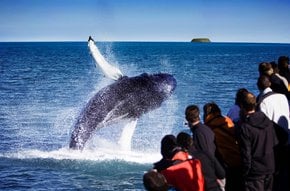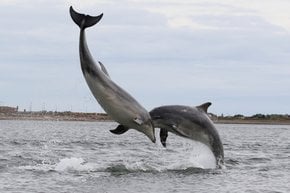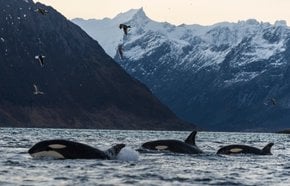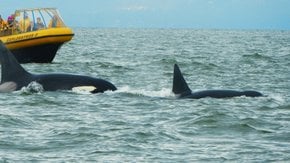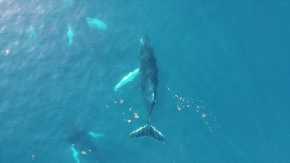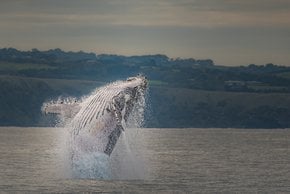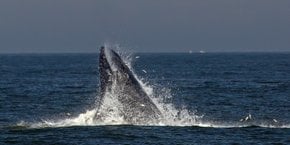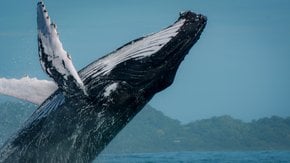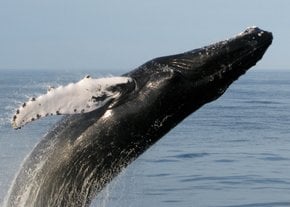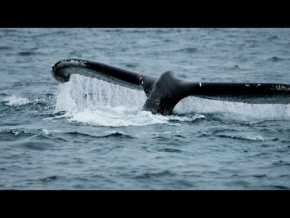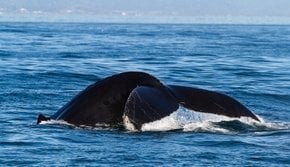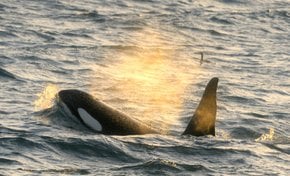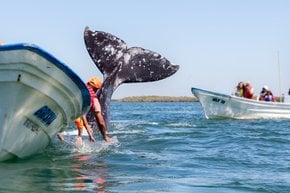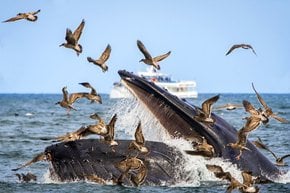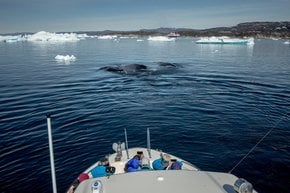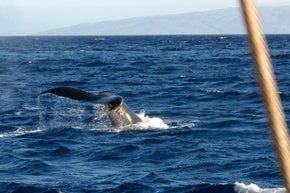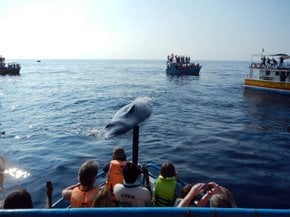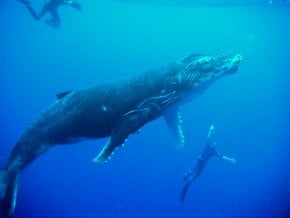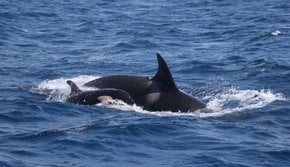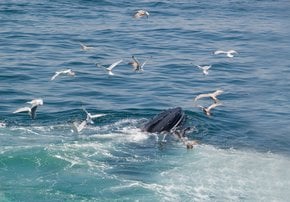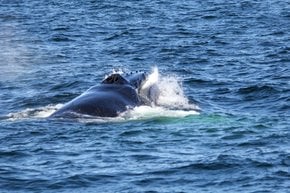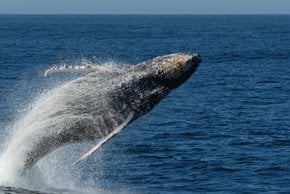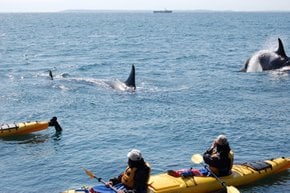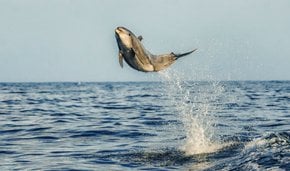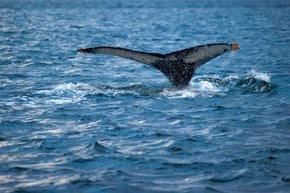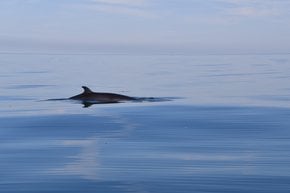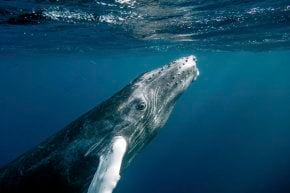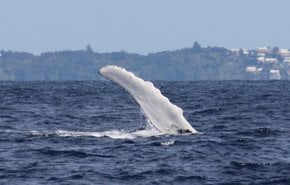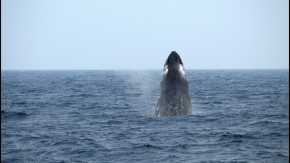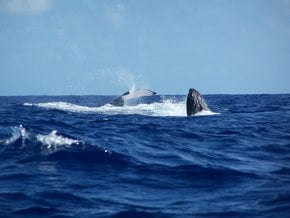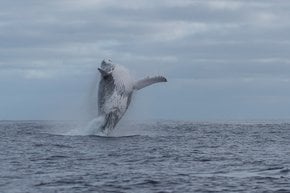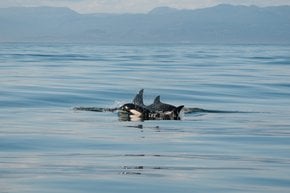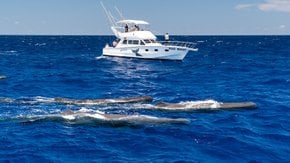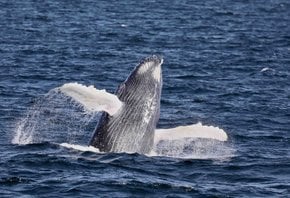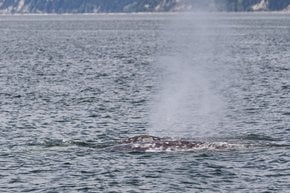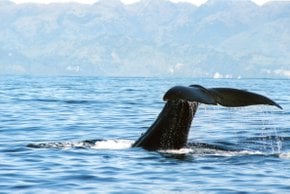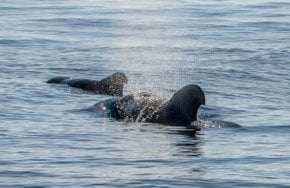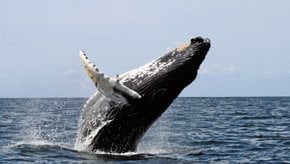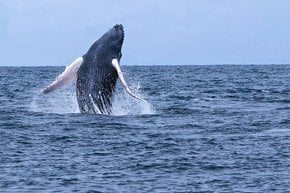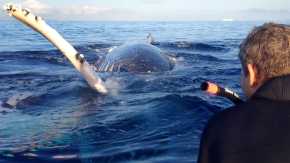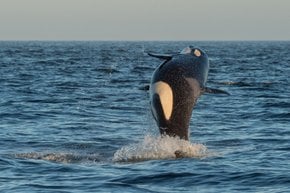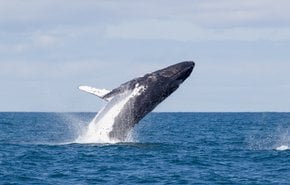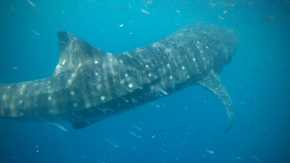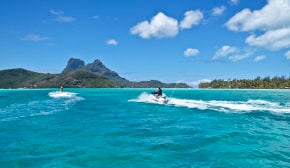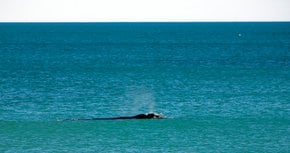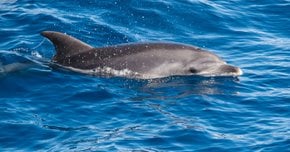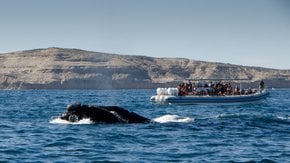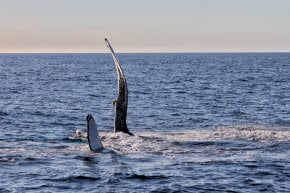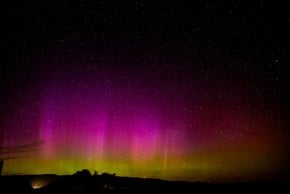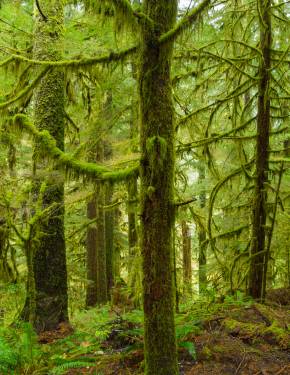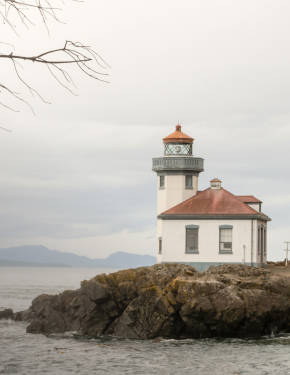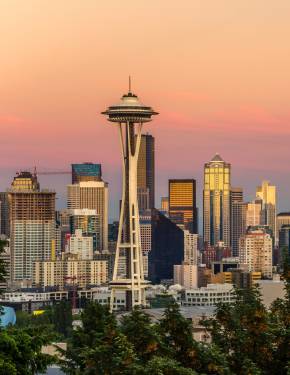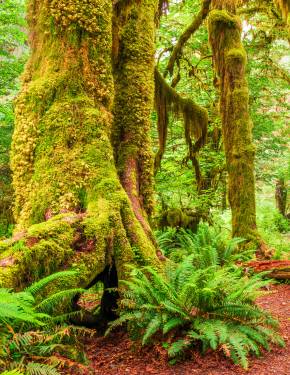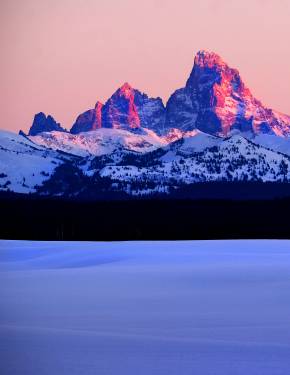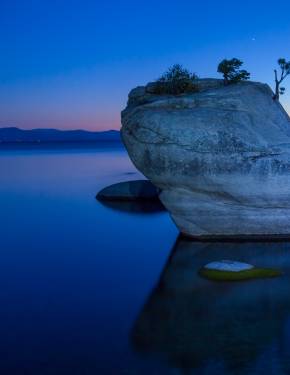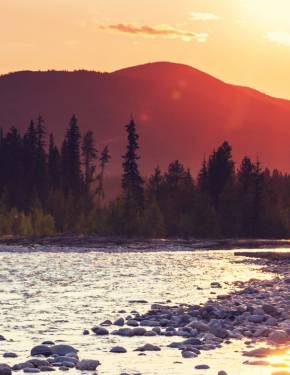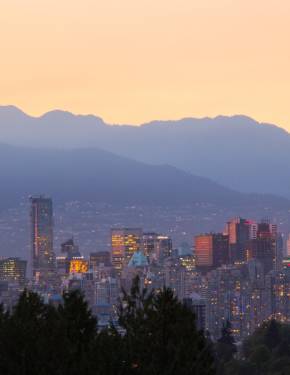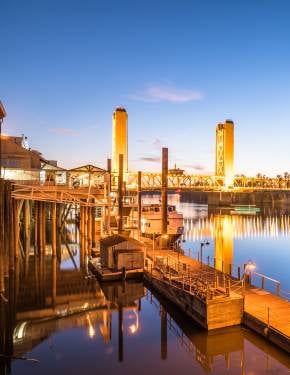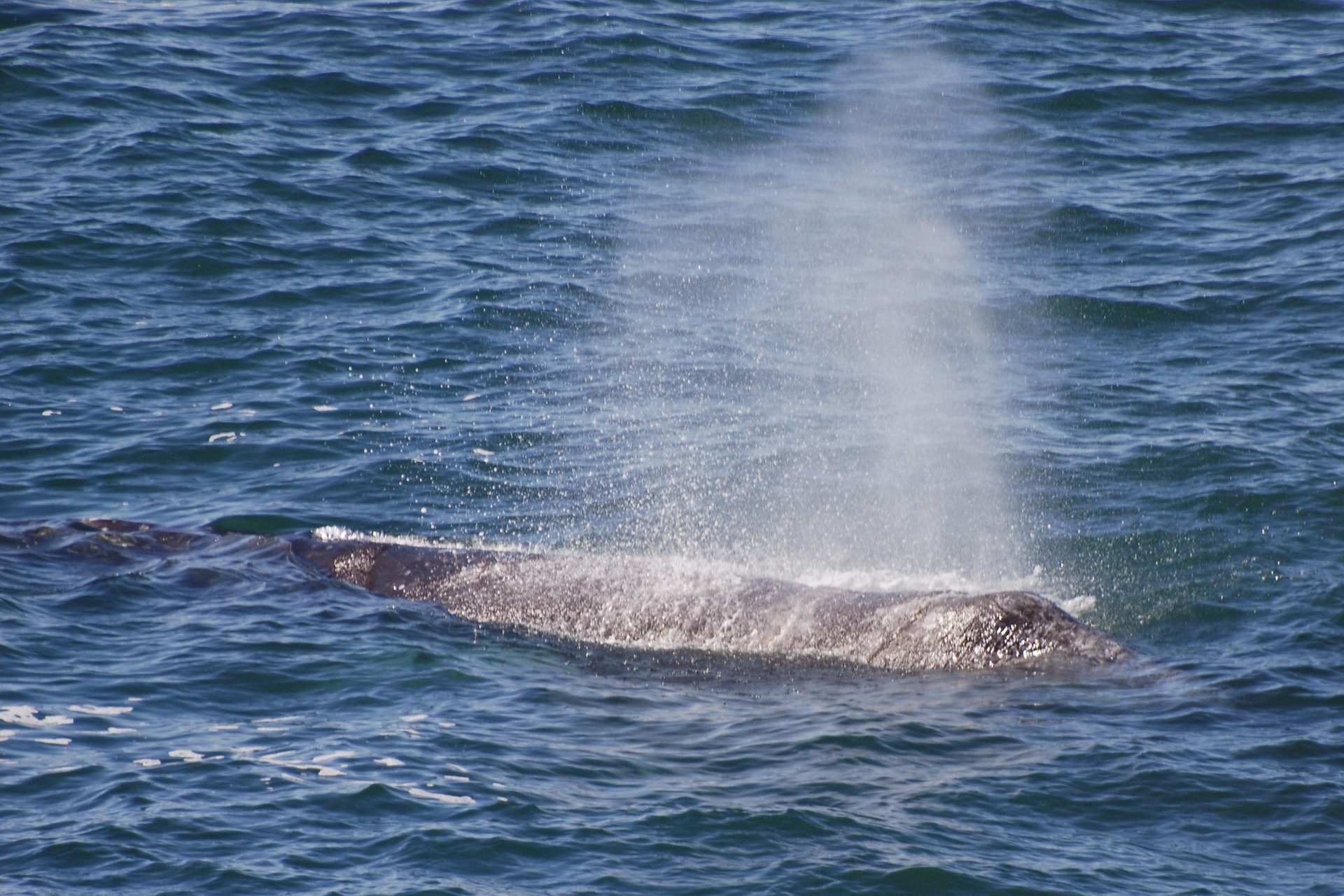
Whale Watching Featured in
Every winter from mid-December to mid-January about 20,000 gray whales pass the coast of Oregon on their way to the warm Baja California Sur waters in Mexico. They return north from March through May. This is the premier time to observe whales in Oregon. However, some species can be found in local waters all year round.
Best places for whale watching
Oregon's Depoe Bay is the top whale watching destination in the state, often called the whale watching capital of the Oregon coast. The whale watching Center in Depoe Bay operates year-round receiving thousands of visitors. During migration season, boats regularly head west from the harbor. While aboard, tourists learn many facts and stories about whales. Pods of gray whales can be found in Depoe Bay in considerable numbers. The success rate of cruises is 98% during peak months. Summer and fall also offer whale watching off Depoe Bay. Some gray whales do not migrate and are residents of Depoe Bay feeding off local reef areas. It's also possible to see harbor seals, sea birds, and other unique sea creatures. Newport has gray whales at any time of the year due to the resident population of about 60 whales that stays off the coast of Oregon. The number of visiting whales in Newport is about 200. About 40 whales can be found between Lincoln City and Newport due to the food supply they have discovered.
Whale-watching tours
For a quick 1 or 2 hour whale-watching tour, check out Trade Winds Charters out of Depoe Bay. Reserve your spot for $40 or less per adult and expect to see gray whales heading south in winter months or headed north in the spring/summer. If you're lucky, you will be treated with a whale breaching, or swimming up and clearing the surface of the water in a spectacular showing.
Marine Discovery Tours, out of Newport, offers cruises for individuals, families, and school groups. Their group tours range from $42 for adults and $28 for children (4-12). Toddlers under 3 are free.
Whale-watching season
Most of the whale species found off the coast of Oregon are migratory. Species such as the gray whale move from their feeding grounds in the rich, deep waters of the Bering Sea between Alaska and Russia or the Gulf of Alaska, to their calving grounds further south in the warm, shallow, and safe waters of the Sea of Cortez in Mexico. Late spring and summer are the best times to view gray whales. Although with a warm coat and some hot chocolate, winter also provides an excellent time to view these massive marine creatures on their journey south.
Gray whale (summer, winter)
Gray whales (Eschrichtius robustus) are known to have the longest migration route of any mammal on earth! They bravely cover well over 10,000 mi (16,093 km) every year, traveling from Alaska to Mexico and back again. Such an incredible trip requires tons of food and energy. These noble underwater cetaceans put on the most weight in the bountiful waters around Alaska's southern coast. These marine mammals are a type of baleen whale, which means they filter food through bristly growths in their mouth. They can grow up to 49 feet (15 m) long and can weigh upwards of 40 tons!
Whale-watching tips
While on your cruise, plan on more windy conditions. If you go out on a sunny day, know that water can reflect UV light, increasing the potential for sunburn. Is this your first time on a boat? If so, then be prepared for the possibility of motion sickness. There are several over-the-counter medications available for this, so consider having some on hand. Finally, keep in mind that nature and weather are unpredictable. Knowing the weather forecast and which marine animals you can expect to see will only take you so far as each boat tour will be different. So take the chance and hope for a most rewarding show.
What to wear
Dress in warm layers if possible, especially if you are going on a winter tour. Consider wearing a windbreaker as your outer layer. You can always take off clothing if you get too hot. Additionally, wear long pants, a hat, closed-toed shoes, and sunscreen to reduce your exposure to UV rays. Many of the tours available to you will have sheltered locations on the boat, but being prepared for anything will help you have a great time on the water.
What to bring
Concessions such as food and water might be available to you if you get hungry or thirsty, but having some snacks and a beverage with you is never a bad idea. Additionally, to get a better view of the wildlife you may encounter out there, bring binoculars. Having these on hand could mean the difference between seeing the whiskers on a harbor seal as it moves in or out of the water or just watching a dark speck move on the horizon. A camera with a zoom lens is another great option for the budding wildlife photographer.
Where to stay
There are plenty options for accommodation on the Oregon coast. Whether you are a budget traveler or wanting to treat yourself, there is a state park campground, bed and breakfast, or hotel for you. Check out our map below to find a place that suits you. For a local listing of options in the Newport area, check out Discover Newport. Depoe Bay has an equally staggering listing of accommodations, but to start your search for a place to stay, try the Channel House, a sea-side lodge that offers magnificent sunset views and the possibility of seeing whales while on land.
Practical info
When can you see whales in Oregon?
Expect to see whales on their biannual migration either in winter months or late spring/early summer. Show more
Is whale watching better in the morning or afternoon?
Typically, mornings are best for whale watching by boat. Expect less winds and calmer waters. Show more
How far is Depoe Bay from Oregon?
84 miles (135 kilometers). Show more


